By Steve Rizer
Roughly two in five construction professionals responding to WPL Publishing’s newest survey indicated that they are unaware of the existence of industry building information modeling (BIM) standard form documents such as the AIA (American Institute of Architects) E202-2008 BIM Protocol Exhibit and ConsensusDOCS 301 BIM Addendum. More than 130 architects, engineers, construction managers, contractors, consultants, and other professionals within the construction community participated in the four-day survey, which concluded July 13.
While 40.4 percent of respondents reported that they are “unaware of any existing BIM standard form documents,” an additional 11.0 percent of survey participants disclosed that even though they are aware of at least one such document, they are unaware of specific contents. Less than half of the respondents (48.5 percent) stated that they have at least a limited understanding of the contents of one or more BIM standard form documents (see figure below).
To what degree do you believe you understand the contents of at least one existing building information modeling (BIM) standard form document?
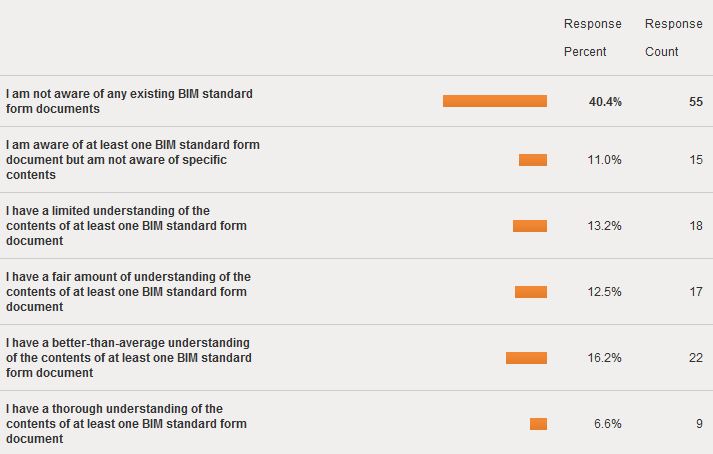
A summary of the AIA E202-2008 BIM Protocol can be viewed at http://www.aia.org/contractdocs/training/bim/AIAS078742. Details of the ConsensusDOCS 301 BIM Addendum can be viewed at http://www.agc.org/galleries/contracts/301.pdf.
Nearly one-third (30.4 percent) of construction professionals participating in the survey said they do not know whether a BIM standard form document was used for the projects in which they participated. Less than 10 percent of respondents reported that at least six of their projects used such a document (see figure below).
Of all the projects you have been involved in, about how many have used a BIM standard form document?

In responding to this survey question, RDT Pacific LTD Senior Cost Planner, Analyst, and Principal Staniland West stated, “This is the big issue. Most professional designers employ ‘self-taught’ CAD [computer-aided design] operators and have no internal systems to check and verify what’s being produced, let alone coordinated with the other design disciplines.”
Of those projects for which respondents were aware of a BIM standard form document being used, design-bid-build was the project delivery method employed most often, according to the survey (see figure below).
For those projects you have been involved in that used a BIM standard form document, which type of project delivery method was used most often?

When asked, “If you have been involved in projects in which a BIM standard form document was used, which type of BIM standard form document was used most often?,” less than one-third of all respondents indicated that either AIA E202-2008 BIM Protocol or ConsensusDOCS 301 BIM Addendum was used most often (see figure below).
If you have been involved in projects in which a BIM standard form document was used, which type of BIM standard form document was used most often?
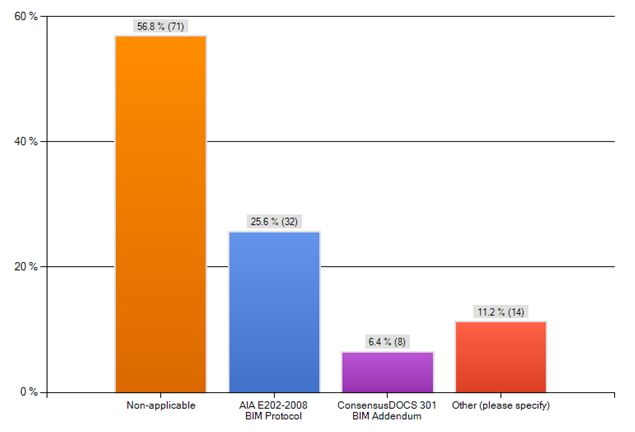
Other documents that respondents reported having used included “US Army Corps of Engineers (RFP), 01 33 16, Attachment F,” “AIAC195,” various in-house documents, among others.
Less than three in 10 respondents expressed a preference for either AIA E202-2008 BIM Protocol or ConsensusDOCS 301 BIM Addendum (see figure below).
Which type of BIM standard form document do you prefer?
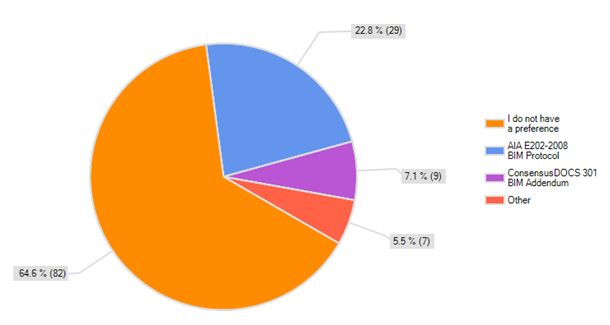
One respondent commented, “I have no preference as long as the terms, conditions, and expectations are clear up front.”
An anonymous architect participating in the survey noted, “Have not had a project where client and/or contractor cared whether or not BIM was involved. It has been all about quickest and cheapest way to get drawings to the table. My clients have not been educated as to value of BIM.”
Here are some other results from the survey along with select comments:
In the projects for which you participated, to what extent, if any, did actual BIM contract language stray from model BIM contract language?

In which ways have you used at least one BIM standard form document for purposes other than contractual agreements? (You may choose more than one answer.)
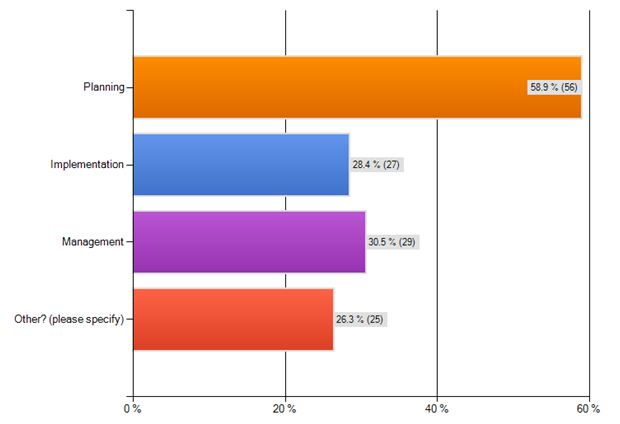
Would you like to see changes/additions to existing BIM standard form documents?
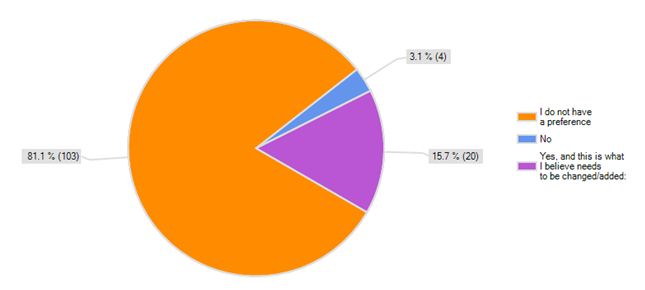
“I believe better documentation could exist with standard forms and MEA roles per phase (i.e., the modeling stage, the coordination stage, and the post construction coordination stage).” -- March W. Chadwick, an architect with M.Arch Architects.
“[There needs to be] CSI Division depth for E202. It is too general. It has been out for several years. See VA BIM Standard.” -- Paul Blanchard, BIM manager at GMB.
“Simplify, make usable, understand end users and the way in which they operate to make a document that fits the needs of the construction industry.” -- Melinda Hoffman, virtual construction design manager at LP Ciminelli.
“AIA LOD [levels of development] needs better clarification, and possible degrees to the LOD like a 250 that lies somewhere between 200 and 300.” -- Mathew Miller, BIM/CAD Systems Manager, SMPC Architects.
Do you intend to comment on any future proposed changes/additions to existing or new BIM standard form documents?

“BIM modeling standards, as a vehicle to leverage its inherent value(s) to the benefit of all vested parties, not just the owner’s, needs to be developed further in a more disciplined and balanced manner by all vested parties. Great attention should be employed to ensure the BIM modeling standards are written to ensure all vested parties benefit equally through its implementation. The more the standards are clearly written to ensure every vested party’s interests are protected and ensured, the more all vested parties will accept BIM modeling as the preferred construction process.” -- Matt DeMonner of DeMonner Engineering
Using its marketing and Construction Advisor Today recipient lists, WPL invited more than 134,000 professionals within the construction community to participate in the survey between July 10 and July 13. Of those professionals invited, 136 responded, including 44 architects, 20 engineers, 18 contractors/subcontractors, 12 consultants, 10 construction managers, seven owners (five private; two public), two supplier/software suppliers, an attorney, and 22 others. Dana Smith, executive director of the buildingSMART alliance, provided assistance in the development of the survey. For the purposes of fair disclosure, it should be noted that WPL is an AIA/CES approved educational provider.
WPL will strive to obtain reactions to the survey results for an upcoming edition of ConstructionPro Week.

